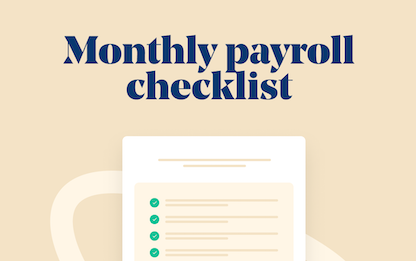- Blog
- |Managing Payroll
- >Payroll legislation
- >the mini budget u-turn explained
The Mini Budget U-Turn: Here's What You Need to Know


What a topsy-turvy few weeks it’s been for UK politics!
After the government’s controversial Mini Budget & Growth Plan received such glacial reception, Prime Minister Lizz Truss appointed a new chancellor of the Exchequer. Jeremy Hunt took over while Kwasi Kwarteng was ousted in an effort to calm an increasingly uneasy economy.
The result? Many are now labelling this the most significant U-turn we’ve ever witnessed in UK economic history.
Call it a ‘U-turn’, an ‘un-budget’, or the ‘end of Trussonomics’; call it what you will, the overarching message is clear: the Mini Budget has been almost completely scrapped to make way for a more moderate Medium Term Fiscal Plan.
Here’s what that means for your payroll.
What’s the Medium Term Fiscal Plan?
It’s a plan that was supposed to go ahead on the 31st of October. Now, the new Chancellor of the Exchequer has brought it forward.
The announced changes were designed to re-stabilise an anxious UK economy and re-establish confidence in Truss’s government.
When was this announced?
The announcement took place on Monday, 17th of October and was covered by all the major networks here in the UK.
Which Mini Budget measures have been reversed?
A number of changes were announced. But, most notably, they were reversals to almost all the measures set out in Prime Minister Truss’s Growth Plan. Here are the main takeaways from a payroll perspective:
The basic rate of income tax, which was going to be cut to 19%, will remain at 20% ‘indefinitely’. In other words, plans are still on the table to cut the basic rate; however, this will only be allowed when economic conditions have improved significantly (not likely to be any time soon).
The dividend tax rate was also going to be cut by 1.25 percentage points, leaving more money in the pockets of company directors. This will no longer take effect. The previous increase, which came about in April 2022, will remain in place.
Reforms to off-payroll working rules (otherwise known as IR35) were also set to be repealed. But these reforms will now remain in place. That means current ‘off-payroll’ contractors should continue to be treated as ‘off-payroll’.
What will remain are the government’s plans to scrap the National Insurance increase as well as the Health and Social Care Levy. From April 2023, the levy will be abolished, while National Insurance rates are set to decrease to their pre-April 2022 rates as soon as November.
What does this mean for businesses and their payroll?
Finding it hard to keep up? You’d be forgiven. There have been so many chops and changes that it is now genuinely tricky for businesses to keep up.
What’s clear is this: the events we’ve witnessed as a result of the Mini Budget have shown us that, try as they might, no government can ultimately control the markets. In order for businesses to thrive and make long-term decisions, they need economic stability.
For growing businesses, this economic uncertainty may make it more difficult to deal with payroll, especially in light of all these new legislative changes.
The number of last-minute legislation changes introduced over the last three years has shown the importance of having payroll software that can keep up. Fortunately, PayFit is a cloud-based software that’s continuously updated, which means you can rely on our platform to include the most up-to-date legislation within days of it being announced.
Rebecca Russell
ACIPP Payroll Expert


UK Expenses Management - A Guide For Employers

Overtime Pay Rates & Laws in the UK

The 2024 UK National Living Wage - An Employer’s Guide

The Cost Of Recruitment In The UK - What You Might Not Know

UK National Insurance Changes for January 2024

